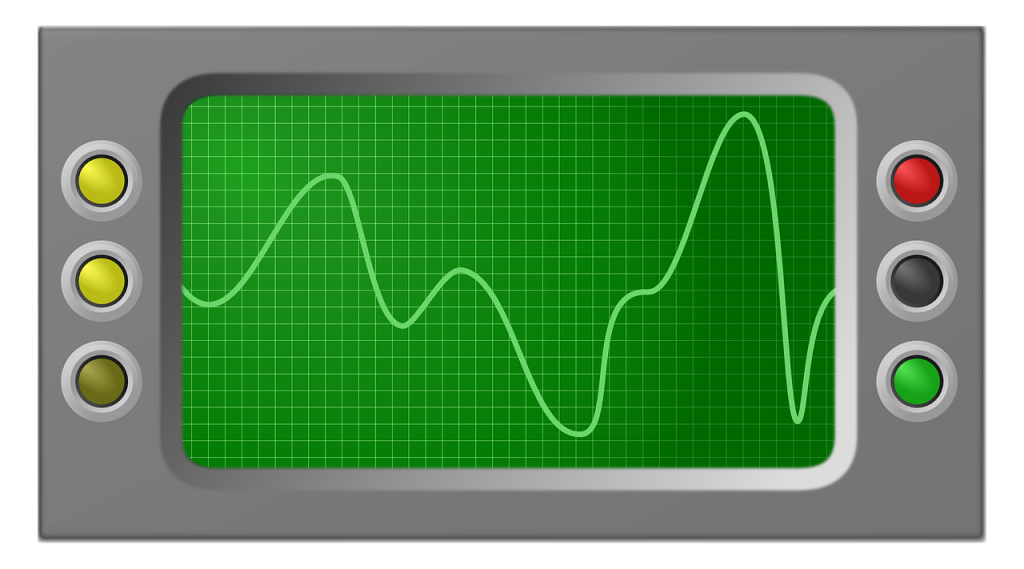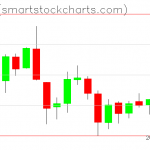Momentum vs. Mean Reversion Trading Strategies
Momentum vs. Mean Reversion Trading Strategies
 Most trading strategies fall into two major categories: Momentum and Mean Reversion. Momentum strategies assume a security that is trending will most likely continue the same trend (whether an uptrend or a downtrend) for the foreseeable future. Mean reversion strategies, on the other hand, assume that a security will not remain overextended for a prolonged period of time and will eventually snap back to a “mean” or fair value. Both types of strategies can make traders a ton of money in the right environment but there’s rarely any fool-proof way of predicting which environment is lurking in the near future.
Most trading strategies fall into two major categories: Momentum and Mean Reversion. Momentum strategies assume a security that is trending will most likely continue the same trend (whether an uptrend or a downtrend) for the foreseeable future. Mean reversion strategies, on the other hand, assume that a security will not remain overextended for a prolonged period of time and will eventually snap back to a “mean” or fair value. Both types of strategies can make traders a ton of money in the right environment but there’s rarely any fool-proof way of predicting which environment is lurking in the near future.
Momentum Strategies
Momentum strategies are commonly known as “Trend Following”. You see a stock marching up in an uptrend and you buy it, anticipating the trend to continue. Or you see a stock sliding down in a dead cat bounce and you short it, expecting it to go down even further. If you hear the words “the trend is your friend” or “buy high, sell higher”, you’re likely dealing with a momentum trader or investor.
Momentum strategies are some of the easiest for beginner traders to implement since the rules for entry are simple: look for a stock that’s clearly trending in a particular direction and trade in that direction. Throw in a momentum indicator like a moving average crossover to instill more confidence in your trade if you like. After all, the Dow didn’t go from 1000 to 11000 from 1982 to 2000 or from 7000 to 18000 from 2009 to 2014 in a single day or even year; trend following trades can prove to be quite lucrative if you play them properly and with a little bit of patience.
Unfortunately, trends don’t last forever and things can get ugly when you, along with countless other traders, are caught on the wrong side when a trend ends. Some ways to limit your losses in case the trend changes include:
- Setting a stop loss order at a key support/resistance level or at the maximum loss you’re willing to incur on this trade, which ever one is smaller.
- Moving (trailing) the stop loss as your security moves along your trend.
- Monitoring the security for chart patterns that imply a deterioration of the trend (i.e. Head and Shoulders.)
Assuming equal diligence in your risk management, you’re less likely to incur large losses with a momentum strategy in the long run compared to a mean reversion strategy which is even more prone to black swans.
Mean Reversion Strategies
Mean reversion is a frequently observed phenomenon in the financial markets where a security strays too far from what is deemed as its “fair value” and either reverses direction towards the fair value or consolidates sideways until fundamental or economic factors cause the fair value to roughly match its current market price. (By “fair value”, I don’t mean the book value of your security but a hypothetical “mean” target price analysts and traders deem your security should be worth regardless of its current market value.) While momentum strategies imply simply following the trend, mean reversion strategies involve betting against the trend. Since momentum strategies are relatively simple to enter and are generally less risky, there’s no need to learn about mean reversion strategies right?
WRONG!
- Most markets and individual securities are not trending a little more than half of the time. You’re throwing away a ton of trading opportunities if you only focus on momentum.
- As discussed previously, some trends tend to end very spectacularly as most traders in that particular security realize they’re caught on the wrong side and desperately unload it or are forced out due to their stop losses. A well timed trade to take advantage of the end of a trend can earn you a ton of money in a short period of time although that’s usually easier said than done.
Entering a mean reversion trade is not as simple as initiating a momentum trade. A stock in motion tends to stay in motion and you need good reason to believe it will no longer continue its trajectory. Look for signs of deterioration or weakness like increased volatility before trying to pick a top or bottom. If you want to be safe, look for a new trend developing in the opposite direction on a shorter time frame and follow that (for example, betting on a top by following a newly formed downtrend on the Daily chart while the Weekly chart is still in an uptrend.)
To ensure that you don’t incur huge losses, you got to stay far more vigilant when pursuing a mean reversion strategy including:
- Deciding how much capital you’re willing to risk on your trade and setting a stop loss to ensure your losses will be capped.
- Keeping an eye out for stock chart patterns, especially ascending or descending triangles, that may foreshadow the change from a mean-reversion regime to a momentum regime.
Combining Momentum and Mean Reversion
From experience, when designing your own rules-based trading systems, it’s usually not a good idea to combine both momentum AND mean reversion based criteria in a single strategy. The momentum criteria will often cancel out the mean reversion criteria causing unintended confusion. Instead, try creating 2 strategies instead: one based purely on momentum and one purely on mean reversion. Then, divide the capital you originally intended for one single strategy among the two new strategies and trade each strategy independently.
Other Strategies
Trading strategies are not entirely limited to either momentum or mean reversion types. Many data driven trading strategies do not specifically pursue either of these common themes. The neural network model I’ve featured here, for example, is one example of such a data driven strategy.



